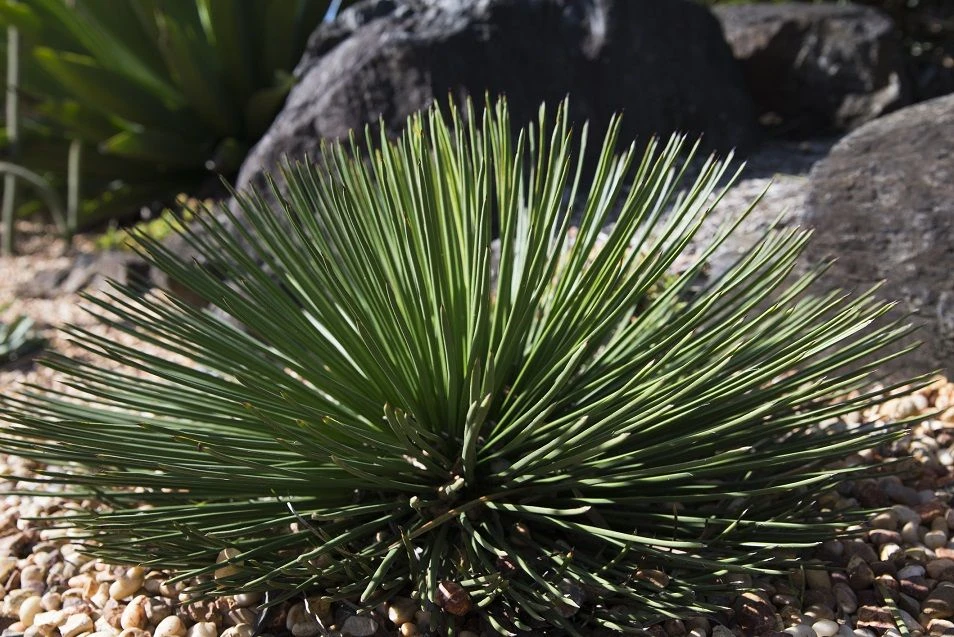reviewed by Christina Lopez
Those who have a passion for growing desert tropical plants will delight in the agave geminiflora. Outdoor hardy only in USDA zones 9 and 10, northern gardeners will be happy to learn that it also is an excellent container plant.
Contents
Typical of desert plants, the agave is a straightforward plant to grow. Tolerant of full sun, the spiky plant is also amenable to the reflected sun or shady conditions, although it will exhibit different behaviors in different exposures. Little watering is needed, as the agave can withstand long periods of dry conditions. Because of this, the soil in which the plant grows must have good drainage.
As a container plant, the agave is ideal for those who traditionally forget to care for their plants. However, it must be kept in mind that no plant that is drought resistant in the outdoors carries that same trait indoors. The agave will need deep watering at infrequent periods when it is kept in a container. When preparing the container, some stones placed at the pot's base will provide adequate drainage of the soil in which the agave is planted. No special soil preparation is necessary; virtually any soil type will be appropriate for the slow-growing geminiflora. They can be placed in direct or indirect sunlight and can easily be switched from one to another. During the warm summer months in northern states, the agave will do well placed outdoors. As colder weather approaches, it will be necessary to take the container indoors as the plant will suffer damage if exposed to temperatures of 20° or lower.

In states classified as USDA zones 9 and 10, the agave plant will thrive outdoors in either full sun or shady areas. Because it does tolerate a wide range of conditions and exposures, this particular agave species is widely popular in gardens. Care should be taken, however, in planting the agave along common walkways that receive full sun. A trait of the agave plants is that full sun allows the spiky leaves to have a terminal spine that is bordered with hair like white fibers; these can be painful and even dangerous to brush up against while walking. Grown in the shade, the spikes often.
Another reason the agave geminiflora is a popular garden and container plant is its unusual attractive appearance. One of the smaller versions of the agave species, the geminiflora grows only to approximately 3 to 4 feet tall. The "leaves" are a lovely dark green, thin and long, growing upwards from the plant's base. Leaves of plants grown in full sun will remain stiff and upright, while those of plants grown in the shade will have a drooping, relaxed appearance. Each offers a beautifully mounded rosette-shaped plant that is as large around as it is tall.
The geminiflora species of agave is also called the "twin flowered" agave. It is so named because two flower bracts are arranged on the single spike that rises from the mound's center. All agave species carry a similar trait in that they flower only once before the plant dies. The geminiflora species has a life expectancy of approximately 10 years. At the end of which time, a tall stem emerges from the plant to display brilliant yellow blooms tinged with red, culminating the agave's life span.
Gardeners who enjoy tropical desert plants and those who enjoy plants that require little care will find the geminiflora to be an attractive, pleasing addition to their garden collections.
 |
 |
 |
 |

About Christina Lopez
Christina Lopez grew up in the scenic city of Mountain View, California. For eighteen ascetic years, she refrained from eating meat until she discovered the exquisite delicacy of chicken thighs. Christina is a city finalist competitive pingpong player, an ocean diver, and an ex-pat in England and Japan. Currently, she is a computer science doctoral student. Christina writes late at night; most of her daytime is spent enchanting her magical herb garden.
 |
 |
 |
 |
Get new FREE Gifts. Or latest free growing e-books from our latest works.
Disable Ad block to reveal all the links. Once done, hit a button below
 |
 |
 |
 |